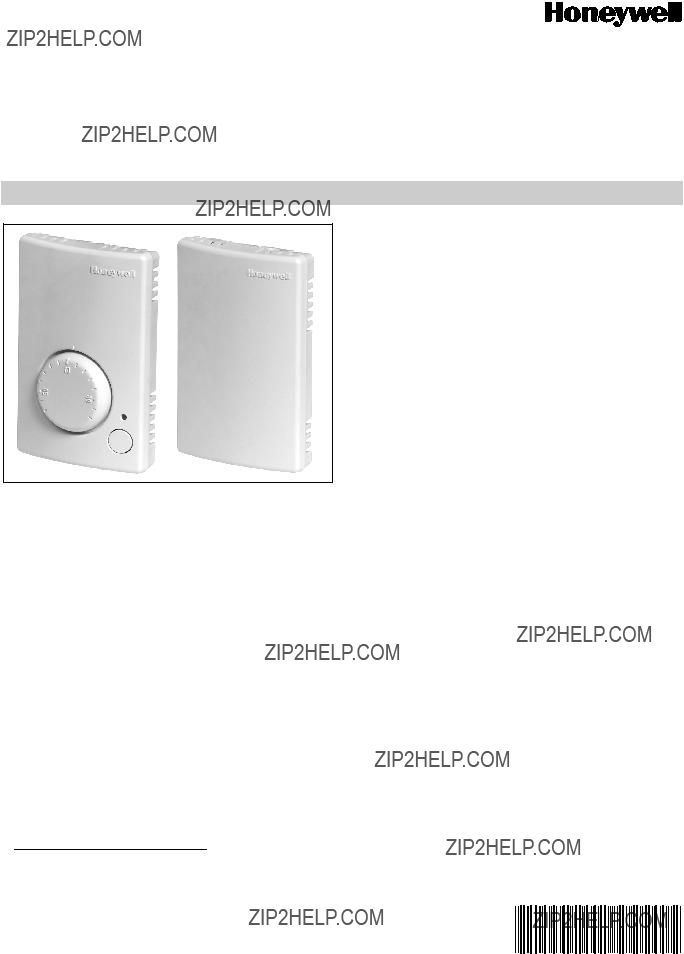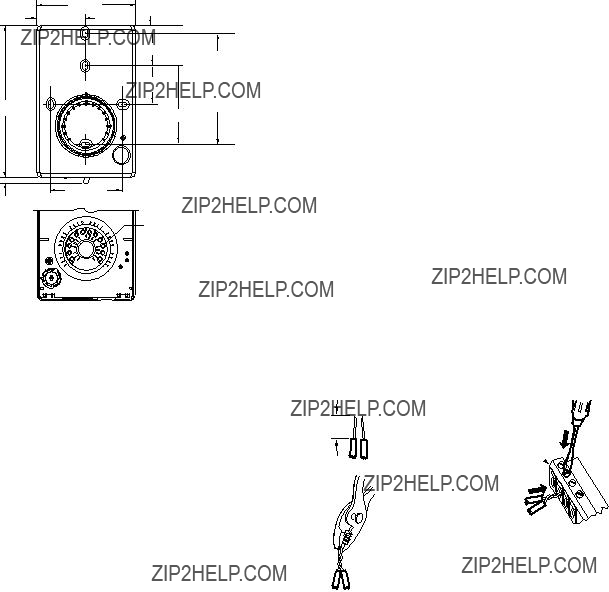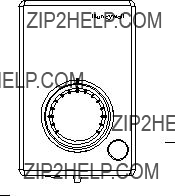
TR21, TR22, TR23, and TR24 Wall
Modules
INSTALLATION INSTRUCTIONS
FEATURES
The TR21, TR22, TR23, and TR24 family of wall modules include:
??? Models with setpoint adjustment.
??? Models with humidity output.
??? Models with occupied/unoccupied override (bypass) with LED.
??? Models with
??? LONWORKS?? bus jack on all models except the TR21 and
??? Locking cover on all models.
??? Operating range 45?? to 99?? F (7?? to 37?? C).
??? Models (TR22 and TR23) with
PRODUCT DESCRIPTION
The TR21, TR22, TR23, and TR24 are a family of
???Spyder Unitary Controllers: PUL, PVL
???Excel 10 W7750, W7751a, W7752, and W7753 controllers
???Honeywell Excel 800, 600, 500, 100, and 80 (all fully programmable) controllers
???W7761 Controller
???ComfortPoint LON Controllers:
All models have a space temperature sensor. Some models have a temperature dial, setpoint adjustment, LONWORKS bus jack, override (bypass) with LED, and fan switch.
NOTE: Refer to the TR21, TR22, TR23, and TR24 Wall Modules ??? Specification Data, form
aThe TR21, TR22, TR23, and TR24 wall modules are not compatible with W7751A,C,E,G Controllers.
SPECIFICATIONS
Models: For specific model information, see TR21, TR22, TR23, and TR24 Wall Modules ??? Specification Data, form
Environmental Ratings:
???Operating Temperature: 45?? to 99?? F (7?? to 37?? C).
???Shipping Temperature:
Accessories:
Approvals: CE; UL94 plastic enclosure; FCC Part 15, Class B
Temperature Sensor
TR21, TR22, TR23, and TR24 20K Ohm Nonlinearized
Sensor:
All models are furnished with a 20K Ohm nonlinear NTC temperature sensor that follows a specific temperature resistance curve. See Fig. 1 on page 2.
NOTE: The

 CAUTION
CAUTION




 CAUTION
CAUTION


 LED
LED OVERRIDE (BYPASS)
OVERRIDE (BYPASS)
